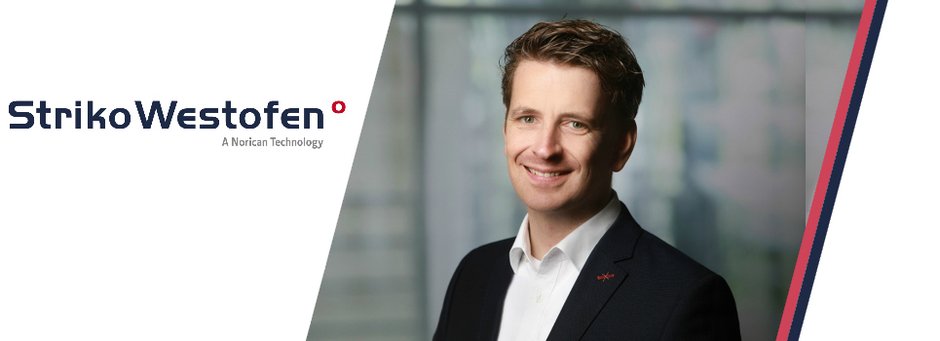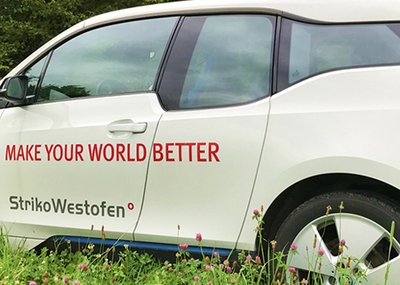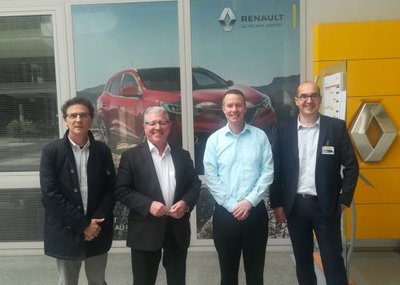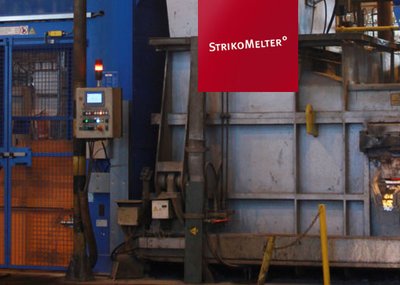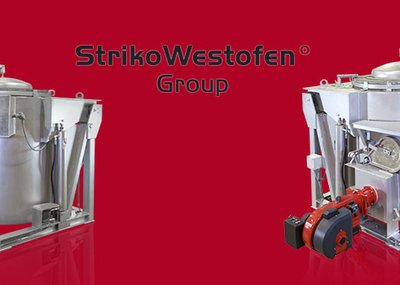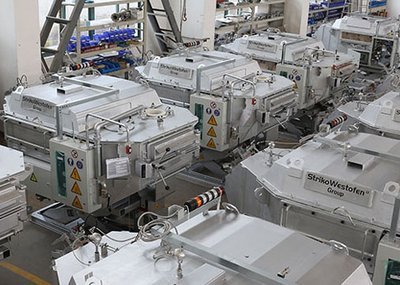Industry 4.0 is everywhere at the moment. It has been hailed as the fourth industrial revolution, in the course of which physical and virtual worlds connect. Tomorrow’s interconnected factories will offer new opportunities for optimisation; and will reduce energy consumption and waste at all stages of production. This means change lies ahead for all manufacturing companies - including light metal foundries. As head of research and development at StrikoWestofen, Theodoor van der Hoeven (39) is driving digitisation from the equipment manufacturer perspective. In this interview, he shares his assessment of the significance of Industry 4.0 for the foundry industry.
Mr. van der Hoeven, what do digital transformation and Industry 4.0 mean to you? How are the two related?
Digital transformation is a trend we are seeing throughout society. It includes things like smart homes, smart cities, smart government, etc. Industry 4.0 could be described as “smart industry”. This instantly shows the difference between the two: Industry 4.0 is the industrial version of digital transformation.
Which main processes or business segments are involved in this transformation? Will we need to adopt completely new business models to be successful and competitive in future?
It is hard to generalise here. For some niche players, embracing Industry 4.0 might not be needed at all, but for those operating in a highly competitive environment, it can be a lifesaver. Industry 4.0 can be implemented in a highly flexible way, which means it can be used for anything from adjustments to a single process through to a complete transformation of the whole business. How it is implemented will strongly depend on your own personal vision and the adoption pressure you experience in your market segment. New business models also offer opportunities and should certainly be considered, but they will not necessarily be a requirement for future competitiveness. Especially in the foundry industry, where foundries are paid for parts delivered, I can imagine that completely new business models may not be necessary. For foundry suppliers, however, the situation could be quite different.
From your point of view, what are the five main success factors for mastering digitisation and keeping pace?
Having a vision and ideas is one; secondly, digitisation has to be a focus of management as something of strategic importance; thirdly, there’s the breaking open of established workflows to transform the way we do things; the fourth factor is your workforce and partners; and finally we need independent, supplier-agnostic standards.
Are collaborations and alliances with IT companies or start-ups useful?
Definitely. With digital transformation, we are constantly confronted with IT topics that typically are outside our traditional areas of expertise. To make that technology useful to our industry, we have to learn quickly, grow where required and bring in external know-how to accelerate your progress.
What are the potential risks or downsides of this transformation?
There are a number of aspects to be aware of. First of all, it is important to consider and analyse the return on investment (ROI). In a digital world, anything seems possible. But without a clear ROI new technologies remain gimmicks. There needs to be a business case for doing it.
Secondly, there’s security. As soon as machinery is connected to the outside world, it’s exposed to greater risks. There are many ways to handle security risks, but most still go hand in hand with restricted usability. To complicate things further, new security risks will keep on appearing, for which a suitable software update system will need to be in place. This does not commonly exist for machine control systems.
Thirdly, the idea of Industry 4.0 includes co-operation within an industrial network of companies. In networks of this type, the definition of ownership becomes fuzzy. Who owns data stored in a cloud? Who has which rights to use that data? These issues cause companies to be hesitant to use certain technologies, which in turn diminishes their very potential.
Fourthly, with all these technological opportunities emerging, there is a real risk of overload – and of losing the thread. The more machines start to communicate, the more data will be used for analysis. It will be key to understand where decisions come from, which data has led to which decision and which layer has the highest priority in terms of decision-making.
What role will humans play in all this?
I’m foreseeing a future where machines are able to operate without human intervention. In that case, the human role would shift from operation towards supervision and maintenance.
How is the foundry industry doing in terms of digitisation and Industry 4.0?
Industry 4.0 is only just starting to arrive in the foundry industry. Basic technologies like machine-to-machine (M2M) communication or remote service over VPN have been in use for some time already. Now customer enquiries about these technologies are starting to increase. To fully unlock the potential of Industry 4.0, there is still a lot to be done both on the supplier and the customer side. Equipment manufacturers like ourselves have to develop the right technologies and build up the necessary expertise. On the customer side, the expected value of Industry 4.0 has to be weighed against current security practice. Here, I expect a gradual adoption of Industry 4.0 technologies within the foundry industry, starting with localised solutions and expanding towards cloud applications and a strong connectivity between foundries and suppliers.
Do you think the industry can learn from digital pioneers like Google, Amazon and Uber?
It is very interesting to see how those companies have developed over time. They all started with a vision, and they became huge by generating completely new possibilities. A direct comparison with the foundry industry is difficult, since foundries revolve around a hardware-based business model, whereas the companies you mentioned mainly focus on services. Changing your business model is not easy when you are simply paid for the cast parts you produce. Foundry industry suppliers are likely to benefit more from alternative business models.
Do you think there will be new market entrants to the foundry industry in future – maybe even from other sectors?
When we think of competitors to foundries, the first thing that springs to mind is additive manufacturing. This is a very interesting technology with many potential applications. Additive manufacturing is an alternative manufacturing technology, and we should keep an eye on it. Nevertheless, a lot still remains to be done to improve processing times and costs per part in order to be a real competitor for mass-produced castings.
Another type of competitor could come from the digital data itself. With the adoption of Industry 4.0, more data will be generated and shared. As Google has shown, data can be used to generate revenue in many ways. Ultimately, this could lead to traditional suppliers being demoted to mere hardware suppliers, with new IT-centric competitors delivering full factory control systems. While I’m convinced that the design of good control systems requires in-depth process expertise, we should not discount this scenario, but rather rethink our market approach.
If you had to describe the foundry of the future using four terms – what would they be?
Fully automatic, self-optimising, safe and clean.
How does StrikoWestofen prepare for this?
For all StrikoWestofen products, we have developed a vision that is used as a guideline for current and future developments. It is based on expected technological advances and business model considerations. It is our bridge to the future and, as far as possible, it is broken down into a step-by-step plan.
What does this mean for the customer? Which new features or services can StrikoWestofen customers look forward to?
I don’t want to reveal too much, because we are still working on quite a few strands. Primarily, developments will focus on process optimisation and expanded service offerings. Examples that indicate our direction of travel are remote access for both StrikoMelter and Westomat, as well as the Westomat closed-loop machine control via M2M communication with the die casting machine, or Westomat Diagnostics, which can now be used for continuous condition monitoring when coupled with an MES system. All of these examples are live and available today.
What role does artificial intelligence (AI) play?
For foundry applications, the tried-and-tested AI technology of machine learning can be deployed to optimise operations. This means that the potential for optimisation is no longer set out in equations or tables – instead, learning algorithms constantly search for optimisation potential within a given, customer-specific framework of parameters. I am a little bit more conservative when it comes to autonomous machines, as we have to ensure absolute safety when dealing with molten metals. Here I expect equipment to be self-optimising rather than autonomous.
What impact does the merger under the Norican Group umbrella have on StrikoWestofen’s efforts around Industry 4.0?
Industry 4.0 can be applied to any industrial process, and its principles are independent of these processes. This means that the entire Norican Group can benefit from both central and local Industry 4.0 developments and experience. This will lead to a boost in technological advances for all brands involved, allowing us to invest in new technologies in a way that would not have been possible without the merger.
Have Alexa, Siri & Co moved into your home yet?
In parts. At home, I am not very technology-focused, as it should provide a counter-balance to life at work, somewhere to recharge. In cars, I am a great fan of automated systems and voice control. I am looking forward to autonomous cars. They will free up time and allow me to travel more comfortably. I would probably have a Siri-brewed coffee while relaxing into my seat on my daily commute.
For StrikoWestofen, Industry 4.0 and digital transformation in the foundry industry will be key themes at Euroguss 2018 in Nuremberg (Germany). Existing as well as new StrikoWestofen technology will be showcased at booth 714 in hall 7.
Theodoor van der Hoeven (39) became Head of Research and Development at StrikoWestofen in January 2016. He has since been spearheading digitisation efforts at the company, particularly in the areas of product development and improvement. Van der Hoeven earned his PhD in combustion and energy technology and looks back on ten years in engine and fluid kinetic machine development.

